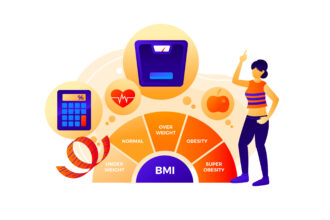If you’re one of the millions of people dealing with temporomandibular disorders, you know how challenging it can be to avoid triggering pain. Since this condition stems from the temporomandibular joint (TMJ), which is responsible for moving the jaw, everything from smiling to eating can hurt!
TMJ disorders are extremely prevalent, affecting 5-12% of the global population. These conditions show up as more than jaw pain, though. If you have a TMD, you may suffer from ongoing headaches, neck pain, dizziness, ear problems like tinnitus (ringing), hearing changes, and clicking and popping in the jaw.
Whether your symptoms are mild or severe, you don’t want to irritate the TMJ. But how can you prevent antagonizing such a frequently used body part? While it may not always be easy to avoid triggering your symptoms, use these tips and tricks to get TMJ pain relief fast.
1. Let Your Jaw Rest
You may not realize it, but you are probably clenching and stressing your jaw more often than you realize. Talking, singing, chewing, smiling, and yawning add extra work to an already overused TMJ and your jaw muscles. Do the best you can to avoid overworking the mouth and giving your jaw some much-needed rest, especially when you notice the warning signs that pain is on the way.
Rest can look as simple as these small behavioral changes:
- Stay quiet for at least 30 minutes. If you have to talk, try to whisper or make minimal jaw movements.
- Wear a night guard when you sleep or are relaxing. A custom-made night guard won’t stop the pain, but it prevents you from unconsciously clenching and using those jaw muscles, which often happens with misaligned jaws from TMDs (for more on how night guards can alleviate pain symptoms, see this article by JS Dental Lab).
- Move to a soft-foods-only diet for a few days (or longer). Eliminate hard, crunchy, or sticky foods as much as possible.
- Don’t rest your jaw on your hands. This movement puts added pressure on the entire jaw, joint, and teeth connection and can significantly increase pain.
Many times, the discomfort you feel stems from inflammation in the TMJ and jaw muscles pushing on the surrounding nerves. Simply giving your jaw some well-deserved rest time goes a long way toward reducing pain.
2. Get Posture-Perfect
Posture classes have been part of etiquette training for centuries, and the reason goes well beyond manners. Proper posture — how you naturally hold your body at rest and during movement — is vital to your overall health.
This position is determined by the musculoskeletal system through the combination of muscles, tendons, joints, and ligaments in the body. But over time, our lifestyle can dictate our posture.
For example, if you are always on the computer, your phone, or playing video games, or you drive a lot, your shoulders and neck may begin to hunch forward. Over time, this becomes your new posture, and the rest of your musculoskeletal system, including your jaw, begins to shift to catch up to this change. This new posture isn’t optimal, as it can change your bite, leading to side effects like teeth grinding and TMJ pain.
Straighten your shoulders and your neck, use old-school posture rules, and retrain your muscles and bones on where they should be. You won’t see instant relief, but slowly, your body will realign, and much of that chronic TMJ pain and other bodily aches and discomforts will disappear!
3. Grab Some At-Home Pain Relief
Resting your body and realigning your musculoskeletal system will help with long-term relief, but if your pain knocked your plans for the day off track, you want it gone fast.
Chronic TMJ is usually treated by a TMJ specialist, who may prescribe medication that helps with the symptoms. But if you’re looking for non-prescription relief, everything you need may be right there in your home already. Here are some tried-and-true TMJ pain relievers to have on hand in case of a flare-up:
- Cold packs are applied to the painful area (with a layer of cloth between the skin and the ice pack) for 15-20 minutes to reduce inflammation. When swelling disappears, the pressure on the nerves does, too, quickly reducing pain. If you don’t have an ice pack in your freezer, you can make one with a Ziploc and ice cubes or a bag of frozen veggies.
- Hot compresses, also with a layer of cloth to avoid direct skin contact, relax the jaw muscles and increase blood flow to the area. Enjoy the relaxation of this treatment for 15-20 minutes.
- Use over-the-counter pain relievers, including acetaminophen or NSAIDs, as directed.
- Try massaging the jaw muscles. A gentle circular massage with light pressure right under the ear lobes can release stress in the muscles.
These simple at-home tricks combined with long-term TMJ management will reduce your flare-ups and help you handle the pain when it shows up on the scene.
Conclusion
Mild cases of TMJ are common and tend to resolve on their own. But when your TMJ pain is long-term, you must learn how to manage this condition to avoid triggering the movements that set off your symptoms. These easy-to-follow tips can help you prevent flare-ups and manage the pain, but the best way to care for chronic TMDs is with the guidance of a TMJ specialist.

















